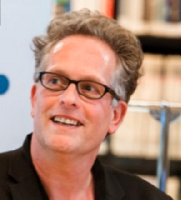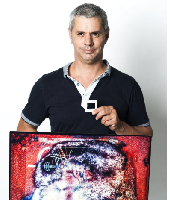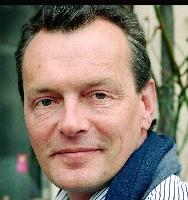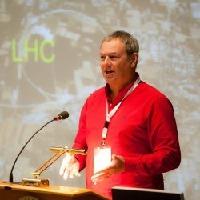DPC
Let’s be honest … a “honey we need to talk” with digital preservation
Michelle Lindlar is Digital Preservation Team Leader at Technische Informationsbibliothek (TIB) in Germany
It seems that most of us are well into the commitment stage of our relationship with digital preservation – it’s no longer a task tucked away in exclusive projects which only few institutions can participate in, but has growing acceptance as an institution’s core function. Or, to put it in the words of William Kilbride himself in reflecting on last year’s WDPD: “we have learned that it’s not about delaying the digital dark age: it’s about coming good on the digital promise”.
Music Treasures
Background
Within the Netherlands there are several archives with sheetmusic. There is not a national organization which covers those archives. Due to financial problems in 2013, all these archives were closed for public and their collections were no longer available. The largest collection is at the Stichting Omroep Muziek ((SOM) Dutch Broadcast Music), which has about 650,000 titles, classical music as well as popular music, salon music and, the unique part, the music which was specifically composed or arranged for the national radio and television broadcasts from 1920 until 1980 (180,000 titles).
Scotland, a leading Nation in Digital Preservation.
Fiona Hyslop is Cabinet Secretary for Culture, Tourism and External Affairs within the Scottish Government
On World Digital Preservation Day, I’d like to reflect on Scotland’s long tradition of preserving its documentary heritage and showcase how Scotland is helping to lead in the global challenge digital preservation.
This tradition dates back to 1286 to the first reference of a Scottish Government official William of Dumfries who had the responsibility of looking after records. This responsibility eventually evolved into the current role of Keeper of the Records of Scotland that we have today. To store our national archives General Register House was built in the 18th century, it is one of the oldest custom built archive buildings in the world still in use for its original purpose, and is home to National Records of Scotland which is responsible for Scotland’s national archive, as well as the registration of vital events and the taking of the 10 yearly national census.
Supporting Digital Preservation Infrastructures
Mariella Guercio is President of ANAI (Italian National Association of Archivists)
In the past few years, many initiatives have been developed to support or promote digital preservation infrastructures, specifically with reference to the quality of the repositories and to the definition of standards for interoperability. This might seem a promising opportunity for making concrete experiences and implementing technical solutions, but I think that the professionals in the preservation sector (mainly archivists and digital curators) should monitor very carefully these initiatives on digital preservation (for example, the ETSI draft for defining policy and security requirements for trust service providers offering long-term preservation of digital signatures; and – even more - the standard ISO 17068 “Information and documentation — Trusted third party repository for digital records,” with its narrow and limited definition of authenticity), for many reasons.
It was 20 years ago today...
Marcel Ras is Digital Preservation Manager for the Dutch Digital Heritage Network
It is almost 20 years ago that the pioneering publications on Digital Preservation were issued by initiative of the KB, the Dutch National Library. The NEDLIB papers described technical challenges and solutions for digital preservation. Preserving digital information was a very different job at the turn of the Century. The challenges with digital preservation were mainly framed in technical terms, as the NEDLIB papers showed us. With the turn of the century also came the millennium bug and the dooms of the “digital dark age”. Gloomy predictions adding some state of urgency and awareness to our work and the profession of digital preservation.
Thoughts on obsolescence
Lourdes Fuentes-Hashimoto is Archivist for Total in Paris, France
When you hear the word “obsolescence” what do you spontaneously think about? I asked the question to a dozen random coworkers, who are neither archivists nor digital preservation specialists. The majority immediately think of planned or built-in obsolescence, that is to say the fact of designing something with an artificially limited useful life so it become quickly unfunctional or unusable. They mentioned “my washing machine” or “my smartphone” as examples. Other colleagues’ quick-fire answer was “something being out of date” or “outmoded” and consequently useless.
Keeping Blogs Alive
Kelly Merks works at the Expatriate Archive Centre in the Hague, Netherlands
The Expatriate Archive Centre (EAC) is an independent non-profit foundation. We aim to collect and preserve expatriate life stories, regardless of a person’s country of origin or where they moved to. Our focus is primarily on unique personal writings. Though much of our collection is tangible — including photographs, letters, diaries and other documents — in recent years we have begun to collect born-digital material.
Des cerises sur le gateau de la préservation digitale / Cherries on the cake of digital preservation
Jen-Yves Le Meur is Digital Memory Project Leader at CERN in Geneva, Switzerland
Le projet de la Mémoire Numérique du CERN, commencé en 2016, se devait de s’attaquer en priorité à la sauvegarde des collections sonores, photographiques et audiovisuelles nées avec l’institut en 1954, et déjà menacées par l’obsolescence de ses supports. En charge de ce projet, je me suis lancé tête baissé dans les inventaires, classifications, regroupements, analyses des pratiques, spécifications, appels d’offre et recherches de fond sans me douter un instant des magnifiques surprises qui orneraient ce chemin.
Ce sont ces surprises que je veux partager ici, à l’occasion de cette journée mondiale de la préservation. Elles sont quelques cerises sur la gateau de notre héritage. Cerises qui donneront peut-être une motivation supplémentatire à tous les acteurs engagés dans des projets de ce type.
Digital preservation at home……. and beyond
Joost van der Nat is a researcher for the Dutch Digital Heritage Network. In 2016 he and his team won the DPC Digital Preservation Award for Research and Innovation.
A short, personal story of how Digital Preservation came into my life, and the way our household deals with it now. Some astounding figures on how the world is expanding its digital universe lead to a burning question…
n=1, or how digital non-preservation showed its ugly face to me
When I try to explain to Muggles (the major part of the population that is ignorant of the blessings of, and the need for Digital Preservation) what Digital Preservation is all about, I often give the example of the scenario that took place in 2004. A trip to New York with our then 11 year old son. I made a lot of video recordings, and spent 60+ hours in producing a home video of 30 minutes on a DVD. Menus and Gershwin’s music topped it off, a great success with family and friends. Then 3 years later the DVD wouldn’t play. Bit rot or low quality DVD? But no problem, of course I had a backup on a separate hard disk. And as you may guess, the hard disk didn’t function… A company called The Disk Doctor saved me, for the round sum of € 750. Lesson learned: store your stuff in the cloud (too).
n=2, or how our household deals with its (digital) objects
Over the years E (my better half) and I have collected significant amounts of recorded music. Vinyl to start with, and countless CDs as of the 1990-ies. Digitising LPs is fun, but time consuming. Fortunately the vinyl collection was not too big. Ripping 600+ CDs and finding and applying cover photos in the course of 15 years is achievable. The music, along with other stuff, is stored on a Synology NAS that is backed up to Amazon Glacier in Ireland for $ 2.34 per month (600 Gb). The point is however that nowadays Spotify has (almost) all of our music at a fingertip.
The same goes for DVDs. In the course of many years the collection of movies grew up to 150+ (modest, compared to some friends). At present Netflix is streaming a lot of this content straight into our home.
Old family photo albums are great. Altogether we have some 15, containing priceless pictures dating back to the early 1900’s. On the pictures one can look back in time, seeing familiar faces in their young versions, and historic views of modernized places. Digitising these albums is fun, Photoshop slowly reveals its secrets and the result is spectacular. The extended families love it. Minor details is the meta data. The date a picture was taken is often not available, and some of these faces must be family, but who is it again ? Too late to ask…
And then, as of the early 2000’s, the digital camera came into our lives. The number of pictures was not longer limited to the 24 or 36 one would have on an analogue camera. An influx of 100’s of pictures per year in the household was manageable. However, soon the camera became part of the smartphone (or is it the other way round ?), and things got worse. E. travels a lot, and loves to share places, moments, people, diners, outings, seminars, nature, odd pictures, and what not. The potential ingest of pictures of her phone is now well over 2.000 per year. As many of these pictures are instantaneously shared with WhatsApp (in various groups) the number of files is likely to be around 4.000. duplicates included. The family curator is in trouble…
Recently I heard of Gudak. This is an app for the smartphone that will let you make 24 pictures, no reviewing. You then wait 3 days before you can check the results. I am going to try to replace the camera function of E’s phone with this app.
All in all our household seems to have reached the maturity level of “backed up bit preservation”. Which is something…
n = zetta, or how the world develops its digital universe
Now only imagine what the above n=2 story turns into when you realise that the number of active mobile social users in the world in 2017 has come to well over 2.5 billion (a third of the world population, see We are Social and Hootsuite). In 2015 Bernard Marr gave some staggering figures in Forbes:
- Facebook users send on average 31.25 million messages and view 2.77 million videos every minute.
- We are seeing a massive growth in video and photo data, where every minute up to 300 hours of video are uploaded to YouTube alone.
- In 2015, a staggering 1 trillion photos will be taken and billions of them will be shared online. By 2017, nearly 80% of photos will be taken on smart phones.
- The data volumes are exploding, more data has been created in 2013 -2014 than in the entire previous history of the human race.
- Data is growing faster than ever before and by the year 2020, about 1.7 megabytes of new information will be created every second for every human being on the planet.
IDC forecasted in 2017 that by 2025 the global data sphere will grow to 163 zettabytes (a zettabyte is a trillion gigabytes [JvdN: A trillion seconds is 31,710 years, to give you an idea.]). That’s ten times the 16.1 Zb of data generated in 2016.
Now my conclusive question is: either the Digital Preservation Community comes up with some ideas on how to tackle this, or should we say “Digital Preservation, don’t try this at home !”?
I do not have the answer (yet ;-). Maybe the industry has, in the longer run?
(Already) 10 years of LHC Data Preservation
Jamie Shiers is Data Preservation in High Energy Physics Project Leader at CERN
From the early days of planning for the Large Hadron Collider (LHC) it was known that it would generate an unprecedented amount of data. As we come to the end of the 2nd multi-year run (Run2) of the LHC, the CERN data archive has broken through the 300PB barrier. The LHC, including its planned upgrades, such as the High Luminosity LHC, will continue to take data for between one and two more decades when it restarts for Run3 in 2021 (so around 3 decades from start to finish).
All of this data – past, present and future – will need to be preserved for at least the data-taking period of the LHC, if not for an extended period thereafter.








































































































































